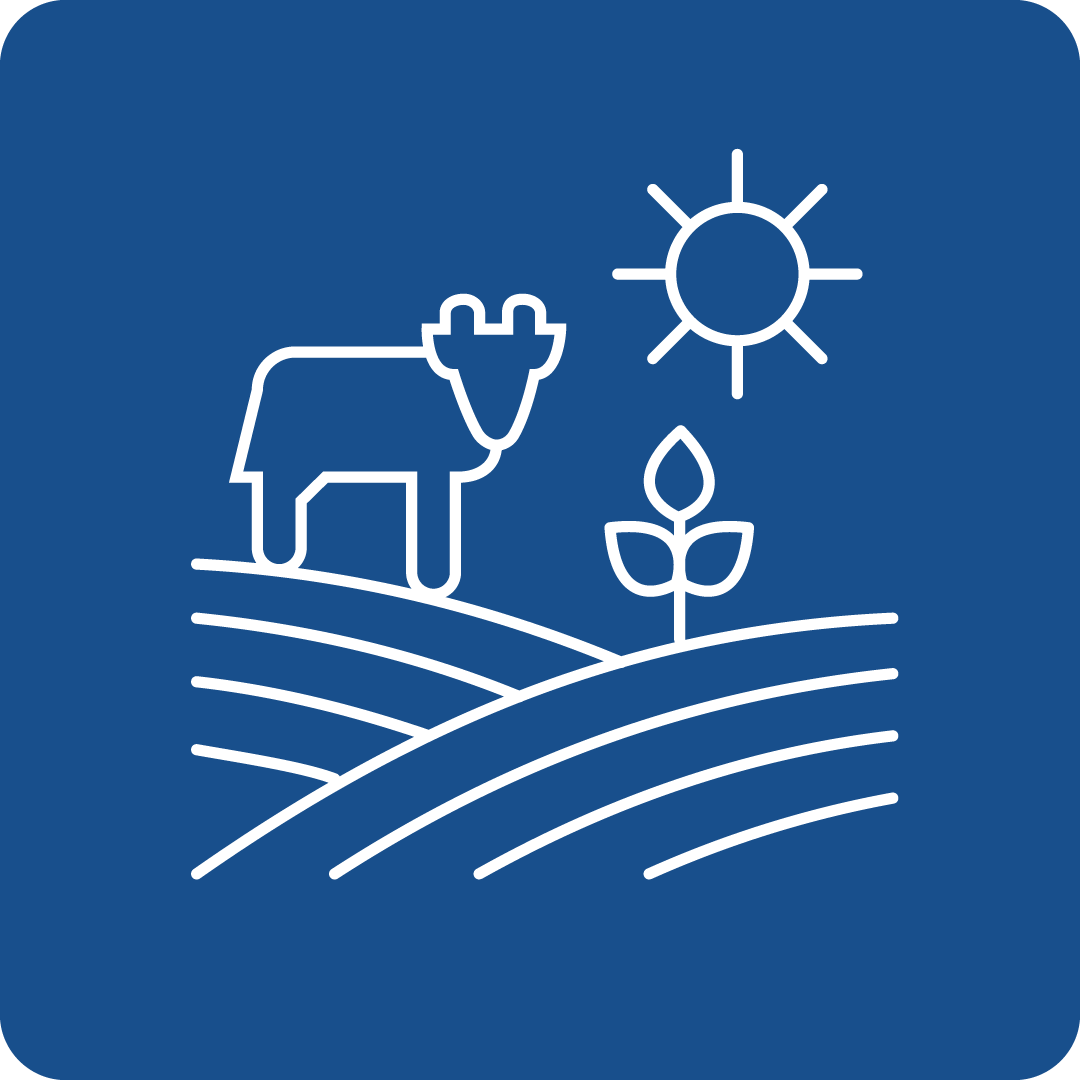Filter Search for grants
Call Navigation
Deadline expired
The deadline for this call has expired.
Call key data
Strategic Nature Projects
Funding Program
LIFE - sub-programme “Nature and Biodiversity”
Call number
LIFE-2024-STRAT-NAT-SNAP-two-stage
deadlines
Opening
18.04.2024
Deadline
05.09.2024 17:00
Funding rate
60%
Call budget
€ 70,000,000.00
Estimated EU contribution per project
between € 10,000,000.00 and € 30,000,000.00
Link to the call
Link to the submission
Call content
short description
The objective of a SNaP project is to support the achievement of EU nature and biodiversity objectives by implementing coherent programmes of action in Member States in order to mainstream those objectives and priorities into other policies and financing instruments.
Call objectives
SNaPs will support the coordinated implementation of:
- Prioritised Action Frameworks (PAF) and/or
- other plans or strategies adopted at international, national, multiregional or regional level by nature and biodiversity authorities, that implement EU nature and/or biodiversity policy or legislation, through coordination of the available funding and mobilisation of additional funding and with the active engagement of all the relevant stakeholders (see “additional conditions” further down within this topic).
In this way, a SNaP project will support effective mainstreaming of nature and biodiversity objectives and priorities into other policies and financing instruments.
Expected effects and impacts
- After the project end (3-5 years after): catalysing full implementation of the PAF and/or other eligible plan(s)/strategy(ies)/action plan(s) as per the “objectives”.
- Significant contribution to the favourable conservation status of natural habitats and species of EU importance maintained and/or restored as per measures identified in the target plan.
- Significant contribution to the reduction of pressures on habitats and species and restored degraded ecosystems as per measures identified in the targeted plan(s)/strategy(ies)/action plan(s).
At stage 2 (full proposal), applicants should review relevant indicators (KPI) in Part C of the eGrant application and complete them with the estimated impact of the project. Part C data should be coherent with the description of impacts of section 2 of Part B of the Application Form.
In case Part C does not include impact indicators that are important for your project (e.g.: NOx emission reduction in case of Air quality projects) you should make use of the indicator “Other project specific KPIs” in Part C and provide a relevant description of such indicators in section 2 of Part B of the Application Form.
More detailed KPI information will be requested during the project implementation time.
read more
Expected results
SNAPs should target the implementation of PAFs and/or the other Plans and Strategies listed below. Please note that a single SNaP can target both a PAF and another Plan/ Strategy.
A SNaP full proposal cannot be submitted in the absence of a PAF or other eligible plan approved/adopted at the appropriate level and, if relevant, submitted to the European Commission which considered it of acceptable quality.
Should the target plan(s) require a major modification regarding e.g. selection of conservation measures or financial architecture, e.g. as a result of the operational programmes negotiations, the relevant authority should submit both the currently applicable plan plus the latest version of the new plan or explanation justifying the expected changes and attach them together with the full proposal.
Depending on the administrative structures of the Member States, PAFs or other eligible plans cover either an entire country or a region. This has a direct impact on the geographical scope of a SNaP as in most cases they would address the implementation of a single plan. Nevertheless, applicants may find it appropriate to submit a SNaP covering territories falling under the scope of more than one plan of the same or a neighbouring country.
The applicants should demonstrate how the project aims at the implementation of the target plan. To this effect the project should include actions that may facilitate the mobilisation and use of other complementary funds that can finance the implementation of actions or measures beyond those supported by the SNaP – both as regards scope and timeframe.
This means in practice that the SNaP shall include (i) a combination of actions that contribute directly to the implementation of measures – and achievement of targets - of the target plan foreseen to be financed by LIFE; and (ii) horizontal actions that facilitate the full implementation of the plan.
SNaP must include specific actions to mainstream the objectives of the targeted plan or plans into other policies and financing instruments.
Further to the general objectives of SNaPs, the proposal should therefore present information on:
- the expected level of implementation of the target plan as a direct consequence of the actions foreseen in the SNaP or through the complementary actions financed by other means mobilised in parallel to the SNaP;
- the area covered by measures, the number of sites, the relevance of these sites in terms of species and habitat types within their bio-geographical regions;
- the expected improvement of the conservation status of species and habitats with particular attention to those habitats and species that are considered as priority and/or those that have been reported as being in unfavorable conservation status; and
- the expected improvement on the long term capacity to monitor and assess the status of species and habitats of EU importance (art 11 and 17 of the Habitats Directive).
- actions planned in order to effectively mainstream nature conservation objectives in the territory targeted by the SNAP into other policy areas and financing instruments
Proposals should present comprehensive projects that will deliver on their core objective and do so in a way that also delivers benefits for other environmental and climate objectives.
These additional benefits can include contributions to the EU Biodiversity Strategy for 2030 as well as the achievement of ‘good environmental status’ under the Marine Strategy Framework Directive, or achieving Water Framework Directive objectives like the:
- evaluation, assessment and restoration of ecosystems and their services,
- increase of the contribution of agriculture and forestry to biodiversity,
- reduction of the impact of fisheries and of other uses of marine and coastal natural resources on biodiversity,
- monitoring, prevention, eradication and control of invasive alien species
- monitoring and conservation of pollinating insects.
Implementation of PAF:
As regards PAF implementation, SNaPs should support the further development, implementation and management of the Natura 2000 network, in particular via the development, testing, demonstration and application of conservation methods and practices, improving knowledge base about the nature values of the sites, raising awareness and improving administrative capacity of the beneficiaries and management authorities. These SNaPs may include Green Infrastructure, actions if referred to in the PAF, so as to, for instance, improve the structural and functional connectivity of the Natura 2000 sites or the condition of ecosystems and the services they provide.
The authorities that elaborated the PAF normally indicated the LIFE programme among the funds that can contribute to achieving targets of the Biodiversity Strategy. Other complementary funds (ERDF; EAFRD, INTERREG, Horizon Europe, EMFF) are usually listed as well. The applicants of SNaPs can in principle base themselves on these indicative funding arrangements when designing the SNaP itself.
SNaPs are expected to implement a chosen set of actions foreseen to be financed by LIFE in the corresponding PAF or PAFs of a country or region (or a combination of countries/regions). For this reason the PAF should be officially adopted at the latest by the full proposal submission deadline for the proposal to be eligible.
Eligibility of SNAPs targeting a PAF which was already the target of a prior nature Integrated Project (IP): a follow-up SNAP proposal targeting the same plan as a past or ongoing nature Integrated Project (IP) can only be eligible, under the following conditions:
- No double funding: LIFE cannot fund twice the same activity, so the proposal should clearly show that this will not be the case.
- The SNAP proposal must demonstrate a clear added value compared to the past or ongoing nature IP, considering that the IP was already designed to catalyse the full implementation of the target PAF.
Implementation of other plans/strategies:
Full implementation of PAF is the key element in most SNaPs. Applicants are strongly encourged, however, to also consider in their SNaP a contribution to the full implementation of other plans or strategies beyond the scope of EU Birds and Habitats Directives. This is particularly the case for the EU Regulation (EU) 1143/2014 on Invasive Alien Species but may also concern other plans in particular where those are stemming from the EU Biodiversity Strategy 2030. Transnational approaches are also encouraged in this context.
SNaPs should support the implementation of the EU biodiversity policy and legislation (indicatively the EU Biodiversity Strategy for 2030, EU Pollinators Initiative, Regulation (EU) 1143/2014 on invasive alien species), in particular via the development, testing, demonstration and application of relevant methods and practices, developing long term capacity for species monitoring, improving knowledge base, raising awareness and improving administrative capacity of the beneficiaries and management authorities.
SNaPs are expected to implement a chosen set of actions foreseen to be co-financed by LIFE in the corresponding plan or strategy of a country or region (or a combination of countries/regions). Due to this requirement, a SNaP full proposal cannot be submitted in the absence of an overarching plan or strategy adopted at the appropriate level by nature and biodiversity authorities, such as national Biodiversity Strategies and Action Plans (NBSAPs) developed under the Convention on Biological Diversity (CBD). Plans or strategies addressing specific areas under those overarching plans or strategies could be supported even if they are in the planning or development stage at the time of submission of the concept note, but they need to be officially adopted at the latest by the full proposal submission deadline. Examples include the following:
- National or Regional Pollinator/Insect Strategies and/or Action Plans
- National or Regional Plans for Green Infrastructure Networks
- National or Regional Restoration Plans, National or Regional Urban Greening Plans, etc. as called for in the EU Biodiversity Strategy for 2030
- National or Regional Plans or strategies supporting implementation of the objectives of the Regulation (EU) 1143/2014 on Invasive Alien Species
Depending on the administrative structures of the Member States, these plans or strategies cover either an entire country or a region. This has a direct impact on the geographical scope of a SNaP. Nevertheless, applicants may find it appropriate to submit a SNaP covering territories falling under the scope of more than one plan or strategy of the same or a neighboring country.
read more
Eligibility Criteria
Regions / countries for funding
Moldova (Moldova), Iceland (Ísland), North Macedonia (Северна Македонија), Ukraine (Україна)
eligible entities
Education and training institution, International organization, Non-Profit Organisation (NPO) / Non-Governmental Organisation (NGO), Other, Private institution, incl. private company (private for profit), Public Body (national, regional and local; incl. EGTCs), Research Institution incl. University, Small and medium-sized enterprise (SME)
Mandatory partnership
Yes
Project Partnership
Proposals must be submitted by:
- minimum 2 applicants (beneficiaries; not affiliated entities)
- the authority responsible for the plan/strategy/action plan should be in principle participating in the consortium as coordinator. In well justified cases it may participate not as coordinator, but it should in any case be part of the consortium.
In order to be eligible, the applicants (beneficiaries and affiliated entities) must:
- be legal entities (public or private bodies)
- be established in one of the eligible countries, i.e.:
- EU Member States (including overseas countries and territories (OCTs))
- non-EU countries:
- listed EEA countries and countries associated to the LIFE Programme (associated countries) or countries which are in ongoing negotiations for an association agreement and where the agreement enters into force before grant signature (list of participating countries)
- the coordinator must be established in an eligible country
Entities from other countries (not listed above) are exceptionally eligible, if the granting authority considers their participation essential for the implementation of the action (see work programme).
Natural persons are NOT eligible (with the exception of self-employed persons, i.e. sole traders, where the company does not have legal personality separate from that of the natural person).
International organisations are eligible. The rules on eligible countries do not apply to them.
EU bodies (with the exception of the European Commission Joint Research Centre) can NOT be part of the consortium.
Entities which do not have legal personality under their national law may exceptionally participate, provided that their representatives have the capacity to undertake legal obligations on their behalf, and offer guarantees for the protection of the EU financial interests equivalent to that offered by legal persons.
Financial support to third parties is allowed in all topics of this Call for grants and prizes under the following conditions:
- the calls must be open, published widely and conform to EU standards concerning transparency, equal treatment, conflict of interest and confidentiality
other eligibility criteria
Please check the call document page 14-21 for more details about the following additional conditions:
- Ongoing and recurring activities
- Mainstreaming - Activities aiming at establishing the targets and or measures for other strategies not targeted by SNaP
- Participation in the Natura 2000 Biogeographical Process
- Platform meetings
- Requirements related to complementary funds mobilisation/coordination
- Stakeholder involvement
- Project management & coordination with complementary funds
- Replicability & transferability
- Polluter pays principle & eligibility of actions
- Land purchase
- Indicative distribution of SNaPs per Member State
Additional information
Topics
Relevance for EU Macro-Region
EUSAIR - EU Strategy for the Adriatic and Ionian Region, EUSALP - EU Strategy for the Alpine Space, EUSBSR - EU Strategy for the Baltic Sea Region, EUSDR - EU Strategy for the Danube Region
UN Sustainable Development Goals (UN-SDGs)
![]()
![]()
![]()
![]()
![]()
![]()
project duration
between 60 and 120 months
Additional Information
Proposals must be submitted electronically via the Funding & Tenders Portal Electronic Submission System (accessible via the Topic page in the Search Funding & Tenders section. Paper submissions are NOT possible.
Project acronym — Your project acronym must include the word LIFE.
Proposals must be complete and contain all the requested information and all required annexes and supporting documents:
- Application Form Part A — contains administrative information about the participants (future coordinator, beneficiaries and affiliated entities) and the summarised budget for the project (to be filled in directly online)
- Application Form Part B — contains the technical description of the project (to be downloaded from the Portal Submission System, completed and then assembled and re-uploaded)
- Part C — contains additional project data and the project’s contribution to EU programme key performance indicators (not applicable at stage 1) (to be filled in directly online)
- Mandatory annexes and supporting documents (to be uploaded):
- for concept notes (stage 1):
- detailed budget table: not applicable
- CVs of core project team: not applicable
- activity reports of last year: not applicable
- list of previous projects: not applicable
- targeted plan/strategy/action plan (if several, combine in one file)
- implementation overview for the plan/strategy/action plan
- complementary funding plan.
- for full proposals (stage 2):
- detailed budget table (mandatory excel template available in the Submission System)
- CVs of core project team: not applicable
- activity reports of last year: not applicable
- list of previous projects: not applicable
- participant information
- targeted plan/strategy/action plan (if several, combine in one file)
- implementation overview for the plan/strategy/action plan
- complementary funding plan
- complementary funding declarations (at least one).
- for concept notes (stage 1):
- optional annexes ( relevant info about activities should be in the main text. Optional annexes are to be used only if necessary to support statements in Parts A-B-C):
- for stage 1: not applicable
- for stage 2:
- letters of support
- co-financing declarations
- other annexes (maps, schemes, etc.)
Proposals are limited to maximum 45 pages (Part B) at stage 1 (you cannot delete instructions) and 200 pages (Part B) at stage 2 (you cannot delete instructions). Evaluators will not consider any additional pages.
Call documents
LIFE 2024 Strategic Nature and Integrated Projects (SNaP/SIP)LIFE 2024 Strategic Nature and Integrated Projects (SNaP/SIP)(1319kB)
Contact
To see more information about this call, you can register for free here
or log in with an existing account.
Log in
Register now


